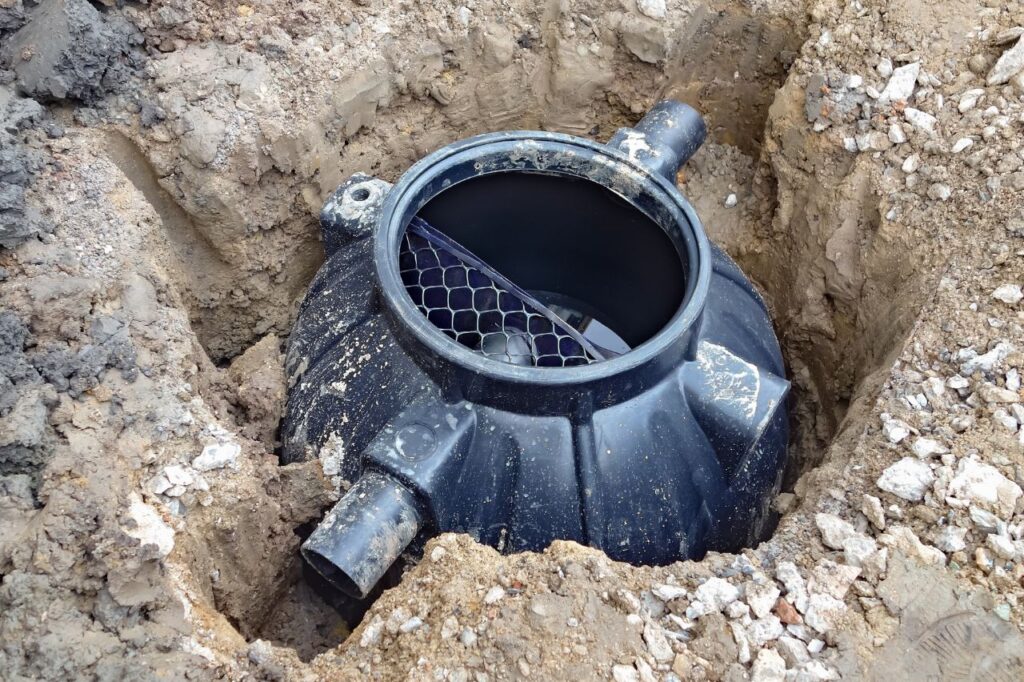Within a septic system, the Septic Tank Distribution Box (DTB) holds a crucial role in ensuring proper wastewater distribution and the overall functionality of the system. As a homeowner, it’s essential to be familiar with this component, its purpose, and the associated costs of installation and maintenance. In this article, we will explore the significance of the Septic Tank Distribution Box, its location within the system, and the costs involved in both installation and ongoing maintenance.
What is a Septic Tank Distribution Box?
A Septic Tank Distribution Box, also known as a D-box, is a junction box positioned between the septic tank and the drain field (or leach field). Its primary function is to evenly distribute the effluent (wastewater) from the septic tank into the various distribution lines within the drain field. By providing equal distribution, the DTB prevents overloading of any particular section of the drain field and promotes optimal wastewater treatment and absorption.
Location of the Septic Tank Distribution Box
The distance between the Septic Tank Distribution Box (DTB) and the septic tank can vary depending on factors such as the design of the system, local regulations, and the specific requirements of the site. However, a general guideline is to have the DTB located within 10 to 50 feet from the septic tank.
The exact placement of the DTB is determined by considerations such as the terrain, soil conditions, and the required distribution of effluent to the drain field. It is important to consult with a professional plumber or septic system installer who can assess the specific needs of your property and determine the optimal distance between the septic tank and the DTB based on these factors.
By following industry standards and local regulations, the appropriate distance can be established to ensure proper functionality and even distribution of effluent throughout the drain field, promoting effective wastewater treatment and preventing system issues.
Installation Costs of a Septic Tank Distribution Box
The cost of installing a Septic Tank Distribution Box can vary depending on several factors, including the complexity of the system, local labor rates, and regional regulations.
Here is an overview of the typical installation costs:
- Excavation and Preparation: This includes the excavation of the area where the DTB will be placed and the preparation of the site to ensure proper installation. The cost may range from $500 to $1,500, depending on the complexity of the excavation process and any additional site preparation requirements.
- Material and Equipment: The cost of materials, including the DTB itself, distribution lines, fittings, and other necessary components, can vary based on the specifications of the system. On average, materials may account for $200 to $500 of the installation cost.
- Professional Labor: Hiring a licensed plumber or septic system installer is essential for proper installation. Labor costs typically range from $500 to $1,000, depending on the complexity of the project, local labor rates, and any additional services required.
Maintenance Costs of a Septic Tank Distribution Box
Regular maintenance is crucial to ensure the optimal functioning of the Septic Tank Distribution Box.
Here are the potential costs associated with its maintenance:
- Inspections: Routine inspections of the DTB are necessary to check for any signs of damage, leaks, or blockages. The cost of inspections can vary, but it is typically in the range of $100 to $300 per visit.
- Debris Clearing: The DTB should be periodically checked and cleared of any debris or solids that may accumulate over time. This maintenance task may incur a cost of around $100 to $200, depending on the complexity and time required.
- Repairs and Replacements: In the event of any malfunctions or damage to the DTB, repair or replacement costs may be incurred. The cost of repairs can vary significantly based on the extent of the issue, the required parts, and the labor involved. It is advisable to consult with a professional plumber or septic system specialist to obtain accurate cost estimates in such cases.
Conclusion
The Septic Tank Distribution Box (DTB) is a critical component within a septic system, responsible for ensuring efficient wastewater distribution and maintaining the system’s functionality. Understanding its purpose, installation requirements, and maintenance costs is crucial for homeowners.
The DTB, located between the septic tank and the drain field, evenly distributes effluent to prevent overloading and promote optimal wastewater treatment. Its placement, typically within 10 to 50 feet from the septic tank, depends on various factors and should be determined by a professional plumber or septic system installer.
When it comes to installation costs, homeowners can expect expenses related to excavation and preparation, materials and equipment, and professional labor. These costs may range from $500 to $1,500, depending on system complexity and site-specific requirements.
Regular maintenance is essential for the DTB’s proper functioning. Homeowners should allocate funds for routine inspections, debris clearing, and potential repairs or replacements. Inspection costs typically range from $100 to $300 per visit, while debris clearing may cost around $100 to $200. Repair or replacement costs can vary based on the extent of the issue and required labor and parts.
By prioritizing the installation and maintenance of the septic tank distribution box, homeowners can ensure the longevity and efficient operation of their septic system. Consulting with a professional plumber or septic system specialist is crucial for accurate cost estimates and personalized recommendations based on individual circumstances. Proper care of the DTB contributes to a healthy septic system, minimizing the risk of disruptions and preserving the environment for years to come.

